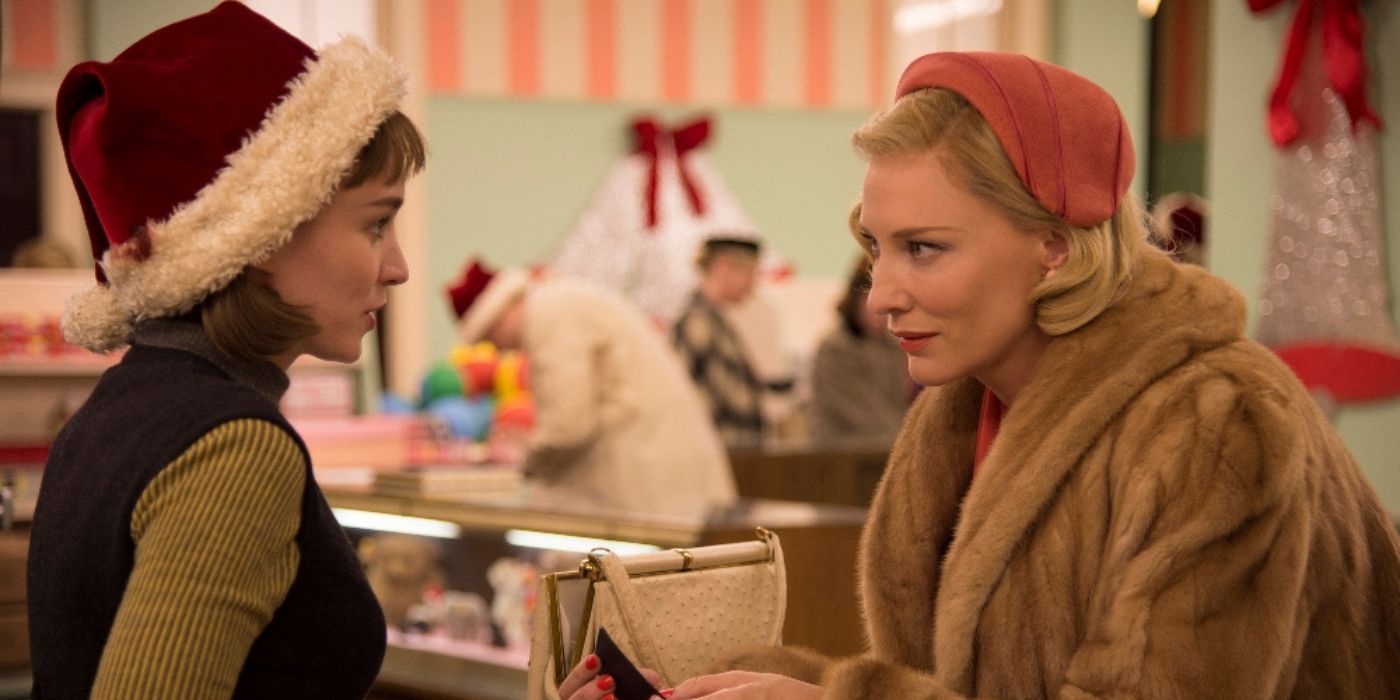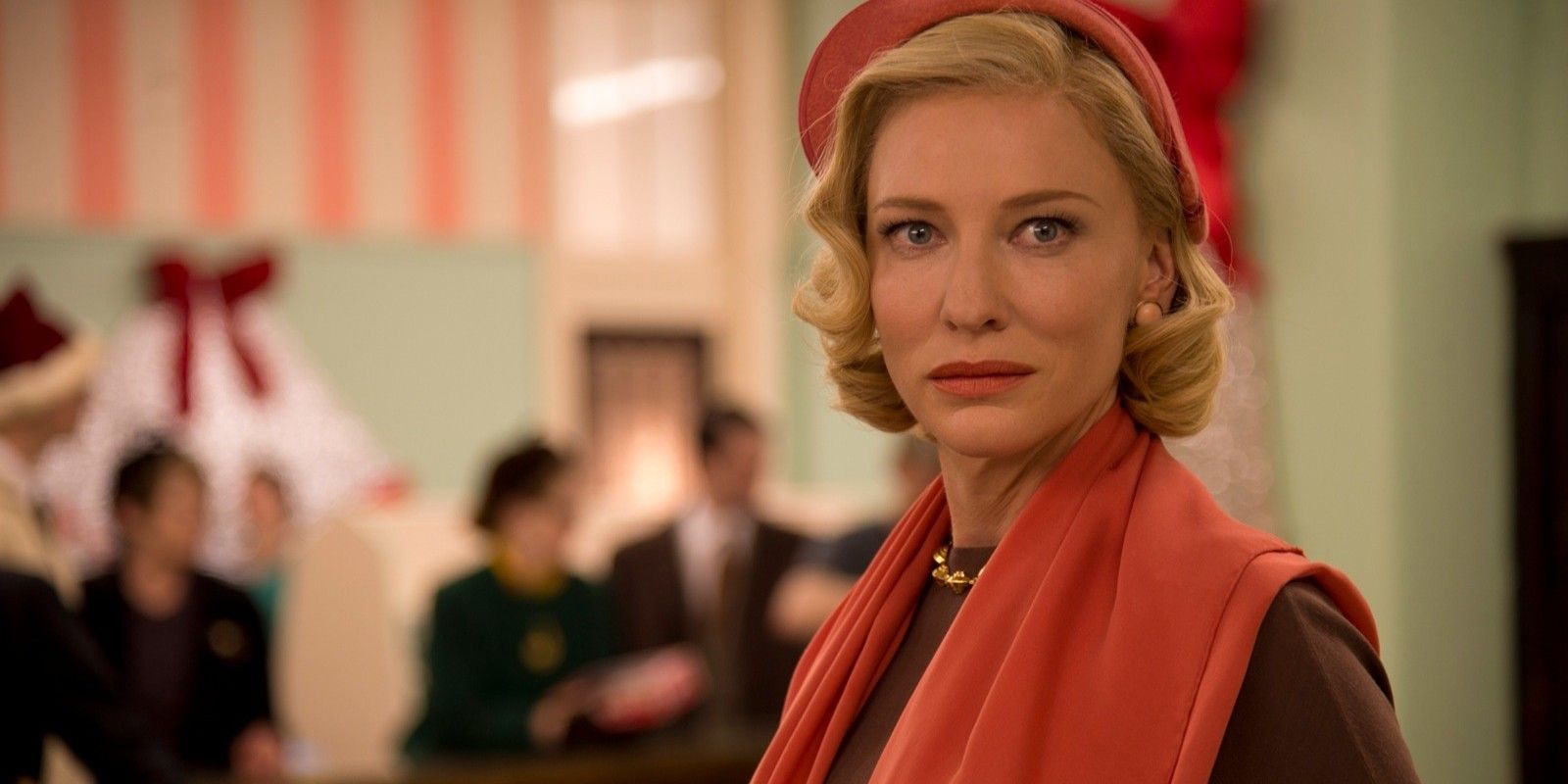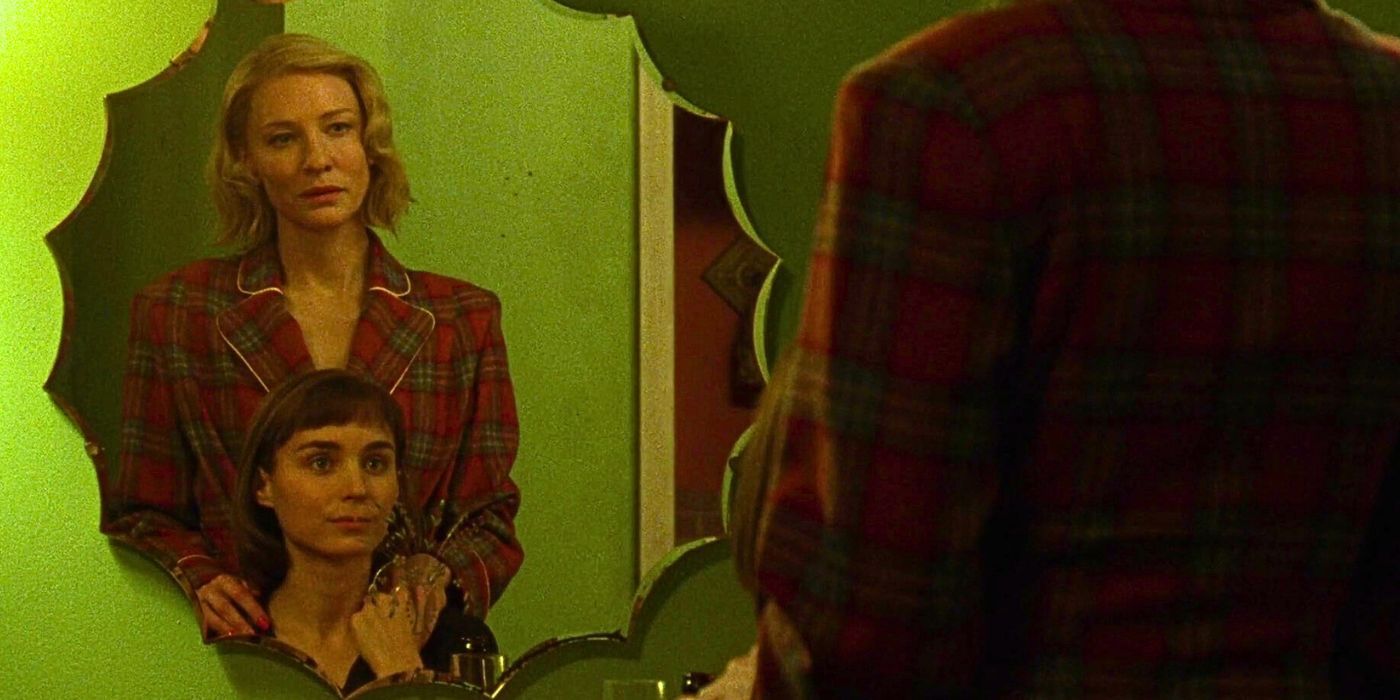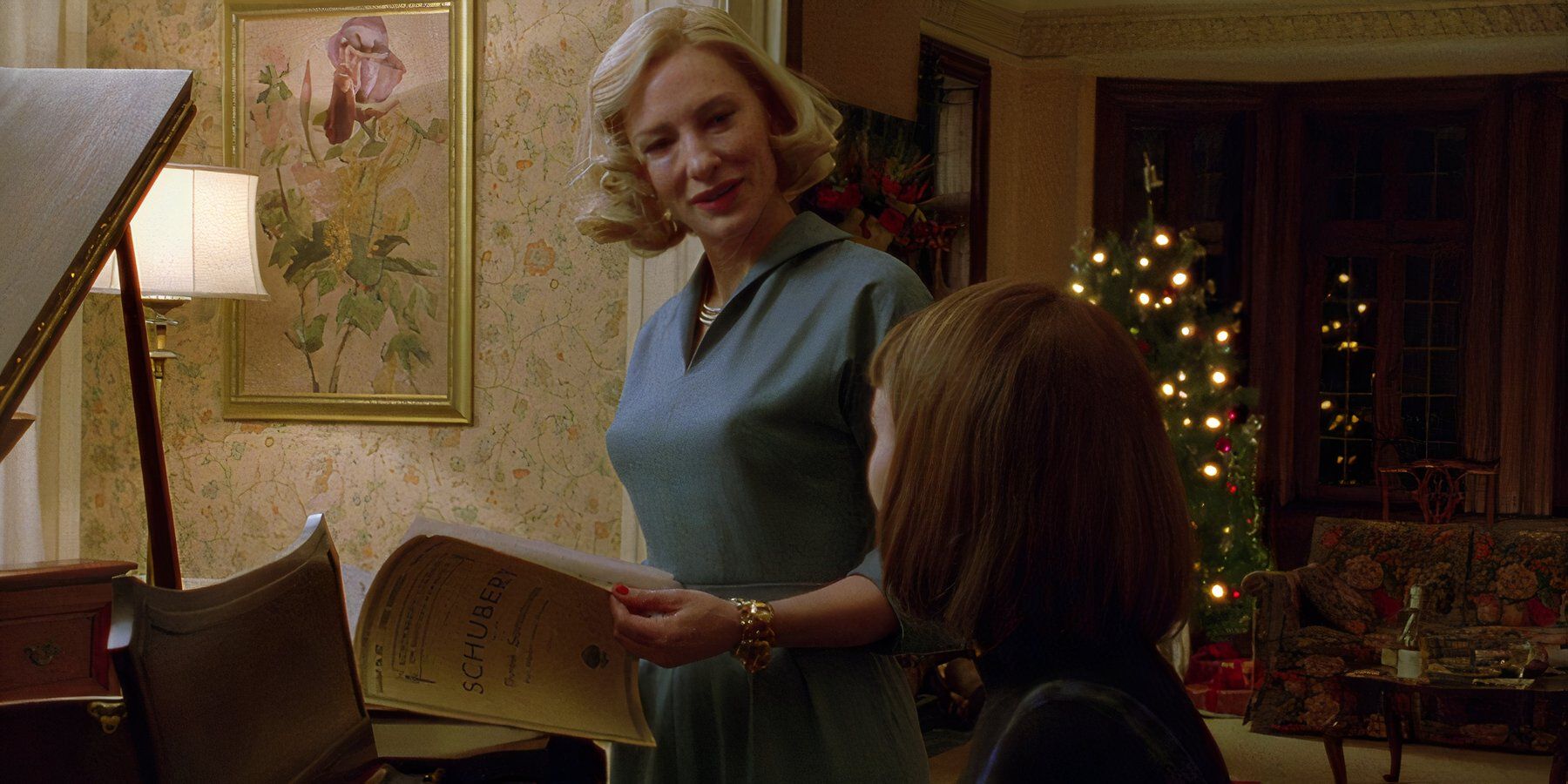Carol showcases the rise and fall of Carol Aird and Therese Belivet’s relationship, but not everything is evident by the end of the movie. The Todd Haynes film is set in 1952, when Cate Blanchett’s Carol meets Rooney Mara’s Therese at a New York City department store around the holiday season. Carol is in the middle of divorcing her husband, Harge, and Therese is in an unhappy relationship with her boyfriend, Richard. As Carol and Therese start spending more time together, Harge grows suspicious because Carol cheated on him years earlier with her friend Abby.
Because of the time period, being gay was not socially acceptable, and pursuing a relationship with Therese meant Carol risked losing her daughter, Rindy, in a custody battle with Harge. Carol was adapted from Patricia Highsmith’s book The Price Of Salt, and also nominated for several Academy Awards and five Golden Globes, but went home empty-handed from both. The 2015 film received praise for tackling such a crucial topic, and was celebrated for both its story and characters. However, the Carol movie ending left some things a little unclear.
Why Carol & Therese Decide To Break Up
Carol Wants Custody Of Her Daughter
Right as Carol and Therese are coming to terms with their feelings for each other, they break off their affair. Carol and Therese kiss and have Sєx for the first time on New Year’s Eve, but things go south the next morning when Carol learns the traveling salesman she and Therese met named Tommy Tucker is actually a private investigator Harge hired to get evidence of Carol and Therese’s affair. Tommy sends Harge tapes with evidence he can use to get custody of Rindy, and this proves the crucial motivator for Carol and Therese’s breakup.
Carol abandons Therese, ending their relationship because she can’t bear losing her daughter. She does not care what her husband thinks, nor whether he approves of her and Therese being together. Carol does not want him to know about her relationship because she realizes he will use it against her. As much as it pains her to leave the woman she loves, Rindy is Carol’s number one priority. Furthermore, Carol knows that she will never be able to be with Therese the way she wants to be, or in a way that is fair to her, due to societal constraints.
Why Carol Gives Up Custody Of Rindy
She Does Not Want To Spend Her Whole Life Hiding Who She Is
Despite fighting hard to gain custody of Rindy and ending her relationship with Therese for that reason, Carol ultimately allows her husband to take her daughter as long as she gets regular visits with her. This Carol ending scene is confusing because Cate Blanchett’s character was willing to do anything to keep her daughter, but then hands custody of Rindy over to her ex-husband, whom she cannot stand.
She has already given up her relationship with Therese, and does not want to lose anything else by not being true to herself.
While Carol’s decision is certainly not easy, she realizes that she cannot hide who she really is, nor who she loves, any longer. If Carol were to keep fighting for her daughter, she would have to do exactly that due to the expectations of the era. Carol decides she would rather lose custody of her child than spend her life hiding. She has already given up her relationship with Therese, and does not want to lose anything else by not being true to herself.
Why Therese Changes Her Mind About Living With Carol
She Realizes How Strong Of A Connection They Truly Have
After giving up custody of Rindy, Carol invites Therese to dinner and asks her to move into her new apartment. However, Therese is too hurt about what happened between them previously, so she declines. Later on, Therese is at a party, but struggling to connect with the other guests. At this moment, Therese realizes that she and Carol have a connection that no one else compares to, and despite what happened before with the breakup, she decides she does not want to lose that.
Therese chooses to let go of the pain Carol caused when she abandoned her earlier in the film, and takes her up on the invitation to have dinner at the Oak Room. Carol has finally proven how serious she is about Therese by not hiding her feelings anymore and moving out of her house, even if it means losing her daughter. These sacrifices mean that Therese now trusts Carol will commit to her, so she gives their connection another chance.
Will Carol & Therese Get Back Together In The Future?
Carol Has An Ambiguous Ending
When Therese arrives at the Oak Room, she and Carol make eye contact as Therese walks toward the table Carol is sitting at. Therese still looks a little hesitant at this point, which confirms their relationship is not yet mended, but Carol is happy to see her. Alas, the Carol movie ending delivers a cliffhanger, never explaining what happens next or whether the main couple actually get together again. The restaurant scene does, however, make clear that Therese is ready to forgive Carol, and this implies that the two can indeed start a relationship together.
It seems most likely that Carol and Therese will take things slow, since Carol must prove to Therese that she is not going to leave her again, repeating the pain she caused previously. Following their reconciliation, Therese will probably rethink Carol’s offer to move in with her.
In Carol‘s ending, it remains unclear how Harge will take Carol and Therese’s relationship, and how that could affect Carol’s ability to be in her daughter’s life, but this is a risk Carol is willing to take if it means she can be with the one she really loves. That dedication will go a long way toward mending her bond with Therese.
The Real Meaning Of Carol’s Ending
Carol Wants To Embrace Who She Is As A Queer Woman
Carol showcases the loneliness that comes from not being able to be with the one you love because of societal standards. Carol was miserable with her husband before divorcing him, which is why she had an affair with Abby. Meanwhile, Therese was very unhappy with Richard. The Carol ending also displays the lengths people will go to for love, and the sacrifices they will make not only to be with the one they love, but also to be who they are without having to hide it from the world.
It may seem extreme that Carol would give up her daughter for a relationship, but this storyline was more complex than it seemed. Carol would still be able to see her daughter per her arrangement with Harge; Rindy would just be living with her father most of the time. Carol knew that she would never be happy hiding who she loved and would forever be a prisoner to Harge because any chance he got to expose her, he would take.
While some have interpreted Carol as having universal messages of love, Carol specifically focuses on the difficulties of queer love. When Therese goes to see Carol at the end of the film, both women are saying that love is more important than what society might think of two women being together, and this is a powerful way to end Carol.
Did The Carol Ending Change Anything From The Book?
Carol’s Daughter Is A Bigger Focus With A Scene That Isn’t In The Novel
Like many film adaptations of a novel, Carol is mostly faithful to Patricia Highsmith’s The Price of Salt overall, but there are some noted changes that take place in the film, as well as the ending. Perhaps one of the biggest changes is how much more of a focus Carol’s daughter Rindy is in the film, which makes the ending with Carol choosing to give up custody of her all that more emotional, given that audiences have had a chance to connect with them.
In fact, the addition of Carol meeting with Harge and their divorce lawyers is strictly from the movie, which makes sense given that Rindy was a bigger focus in it. It’s one of the most poignant scenes in the film, and where Carol finally realizes that she no longer wants to live a life where she can’t be who she is.
Carol finally realizes that she no longer wants to live a life where she can’t be who she is.
One of the other changes made towards the end of Carol that differs from The Price of Salt is that the novel tests Theresa’s love for Carol more overtly in the end. While Therese meets an unnamed woman in Carol, who might have feelings for her, The Price of Salt explores this further with a much longer conversation between the woman and Therese, where the woman makes it obvious she has feelings for her.
How The Carol Ending Was Received
The Happy, But Ambiguous Ending Was Well Received In Carol
LGBTQ+ representation in film has historically been reserved for stories that end in some type of tragedy, as if the characters in these movies should know nothing but pain. Thankfully, that has shifted dramatically over the years, with more movies and shows than ever featuring happy endings for LGBTQ+ characters. The fact that Carol was able to do that a decade ago, while The Price of Salt did it decades prior to even that, makes it all the more special for how it ends.
Carol was nominated for a total of six Academy Awards, including Best Costume Design, Best Original Score, Best Cinematography, Best Adapted Screenplay, Best Supporting Actress for Rooney Mara, and Best Actress for Cate Blanchett.
While some might feel frustrated with ambiguous endings in general, Carol was able to keep that type of open-ended narrative while also providing much-needed catharsis for the characters involved, making it one of the best LGBTQ+ representations in film. Both audiences and critics alike responded in kind to Carol and the film’s ending, which was emotionally resonant given everything the characters went through over the course of the movie.











